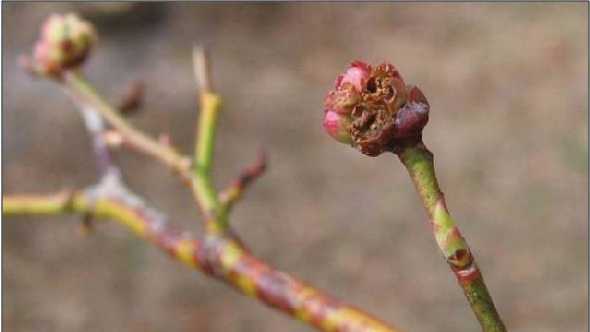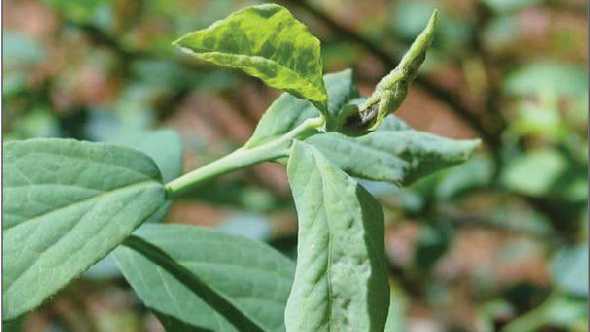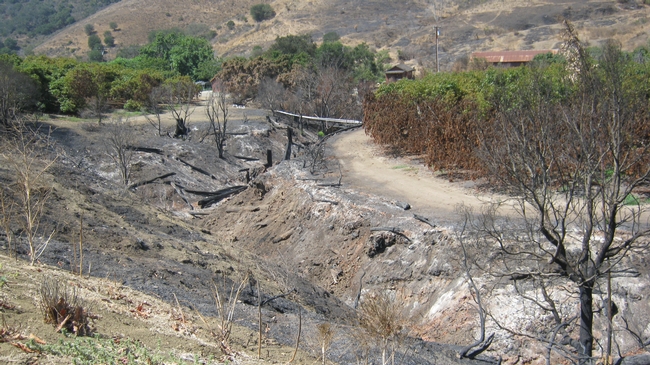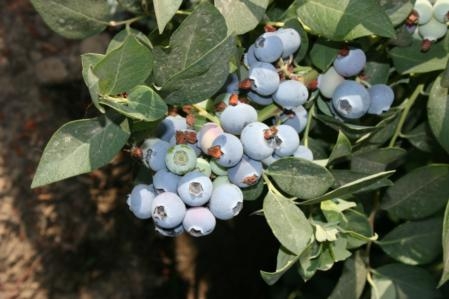
Posts Tagged: blueberry
Something is Different This Year
Plants have been acting differently this spring. Along the coast the peaches have barely bloomed and it's May. Avocado Brown Mite has had a field day. Stethorus beetles have been in low numbers and biocontrol is out of whack.
Her ladybug Coccinelid sisters have been in low numbers, as well. There's lots of ladybug species in the coastal area. Usually the first ladybugs show up on the aphids feeding on the malva (cheeseweed) new growth. I haven't seen many aphids on the malva, but for the last several weeks the new growth on citrus has been hammered by green peach aphid (http://ipm.ucanr.edu/PMG/r604300111.html). They have also been feeding on new growth blueberry.
This aphid doesn't normally get out of hand like this. Possibly the fires have burned up the hills where they were hibernating this winter? Aphids are not normally a problem in either mature citrus or blueberry. It can run it's course, and something will come in to eat them, but it's interesting how a year can be so different from others.
More winter stories
//ucanr.edu/blogs/blogcore/postdetail.cfm?postnum=26823

green peach aphid
Blueberry Gall Midge?
Several Florida blueberry growers have recently reported flower bud damage and corresponding fruit loss, in some cases up to 50% on certain affected cultivars. These reports have focused primarily on Emerald, Farthing and Meadowlark, although other cultivars may have also been affected to some degree. There could be multiple reasons for flower bud damage and the resulting fruit loss, including hydrogen cyanamide and freeze damage. However, in several cases this year it is believed that this type of damage has been caused by blueberry gall midge.
High populations of blueberry gall midge in blueberry can result in significant flower bud injury and reduce fruit set and yield. Females lay eggs in floral and vegetative buds just after bud swell. Gall midge larvae then feed on developing leaf and floral buds. Affected floral buds develop a dry, shriveled appearance and will often disintegrate (Figure 1). Damaged leaf buds are characterized by misshapen leaves and blackened and distorted shoot tips (Figure 2). When the terminal bud on a shoot is injured or killed, shoot elongation growth may be inhibited with excessive later branching occurring just below the damage terminal bud. Weather may impact the density of gall midge populations, with warmer temperatures > 60o F resulting in early emergence. Furthermore, re-infestation of previously infested areas is common if management action is not taken when gall midge injury is observed.
Growers should be aware of the possibility of gall midge damage in their fields this season, resulting in floral bud death and lower fruit set. Dr. Oscar Liburd, University of Florida blueberry entomologist, is preparing a bulletin to be released very soon with current gall midge management recommendations to be implemented after this season's harvest is complete. Until this extension bulletin is ready to be published, growers can view pesticide recommendations for gall midge in The Blueberry News magazine.
High populations of blueberry gall midge can result in significant flower bud injury and reduce fruit set and yield, Phillips points out. The following are his scouting tips for this pest.

Blueberry gall midge bud damage
Photo by Craig Roubos
- Females lay eggs in floral and vegetative buds just after bud swell. Gall midge larvae then feed on developing leaf and floral buds. Affected floral buds develop a dry, shriveled appearance and will often disintegrate.

Symptoms of blueberry gall midge leaf damage
Photo by Craig Roubos
- Damaged leaf buds are characterized by misshapen leaves and blackened and distorted shoot tips. When the terminal bud on a shoot is injured or killed, shoot elongation growth may be inhibited with excessive later branching occurring just below the damage terminal bud. Weather may impact the density of gall midge populations, with warmer temperatures (greater than 60°F) resulting in early emergence. Furthermore, re-infestation of previously infested areas is common if management action is not taken when gall midge injury is observed.
Is this something that California growers should be concerned about? To my knowledge these midges have not been reported in California. We also don't use hydrogen cyanamide which may be contributing to the problem. With plant material and people moving around, though, it might show up and be a problem. I never thought blueberry rust would show up in California, but as the crop has become more widespread, it has showed up. Ever alert.
Alert from UF/IFAS Blueberry Extension Coordinator Doug Phillips:
http://entnemdept.ufl.edu/creatures/fruit/blueberry_gall_midge.htm
https://pubag.nal.usda.gov/download/10784/PDF
Photo: Blueberry Gall Midge, Dasineura oxycoccana

blueberry gall midge
Disaster Contacts for Growers
|

IMG 2037
Organic Blueberries Make More Money
Synopsis of: “The Organic Premium for California Blueberries” by Hoy Carmen, professor emeritus in the Agricultural and Resource Economics Dept., UC Davis
Commercial-scale production of blueberries in California is a relatively recent development. California first reported blueberry statistics in 2005 when there were 1,800 acres of blueberries harvested and production of 9.1 million pounds with a total value of $40.58 million. Harvested acres increased to 3,900 acres in 2010 with production of 28 million pounds and a total value of $75.98 million. Growth continued through 2015 with California Agricultural Statistics Survey (CASS) reporting 5,700 acres of blueberries harvested, production of 62.4 million pounds, and total value of $116.98 million.
California blueberries are shipped throughout the U.S. and to a number of export destinations. During the 2016 harvest, California's largest U.S. market was California, which accounted for 34.75% of California's total fresh blueberry shipments of 46,493,407 pounds.
The largest out-of-state domestic shipments were to Texas, Oregon, Washington, Arizona, New York, Minnesota, Utah, and Pennsylvania. These states collectively accounted for 36.54% of California shipments. Canadian shipments of 5.54 million pounds accounted for 11.9% of California's volume and made up 67.1% of exports.
Typically, the price per pound of organically grown blueberries is higher than for conventional production. Prices also vary by package size, with smaller package sizes usually selling for more per pound than larger packages. There is usually a premium for the first portion of the crop-marketing year, and the overall level of prices will vary by year. Prices can also be expected to vary by geographic location. California organic blueberries are among the first domestic fruit on the market when prices tend to be seasonally high.
Growth in California organic blueberry production has outpaced conventional production for several years, and California accounted for about half of the U.S. supply of organic blueberries in 2014. The organic share of California blueberry shipments in 2016 was 23.1% in terms of volume and 34.8% in terms of value. The larger share of value is due to the premium price for organic blueberries.
The organic premium, which averaged $2.28 per pound in both 2015 and 2016 (78–79% of the conventional fresh blueberry price), varies by package and over time. California has some of the earliest domestic blueberry production, with relatively high prices for both conventional and organic blueberries at the beginning of the season. The proportion of shipments that are organic decreases as the season progresses and the organic premium tends to be highest after the first one-third of the season. The growth of organic blueberry production in California, relative to overall California production as well as U.S. organic blueberry production, seems to indicate a comparative advantage for organic blueberries in California. Further growth of organic as well as total blueberry production in California is expected.
For the full article see:
Organic production costs, South Coast
Conventional costs, South Coast
Conventional, San Joaquin Valley
Report on US Organic Sales, 2016
https://www.nass.usda.gov/Newsroom/2017/09_20_2017.php

Blueberry fruit
Another Way to Figure Out What to Grow and Market
USDA Specialty Crops, the Agricultural Marketing News Service and What's Worth Planting
The AMS Specialty Crops Program helps buyers and sellers of all sizes in the U.S. produce industry to market their perishable products in the most efficient manner. They partner with State agencies and other industry organizations for the benefit of nationwide growers, shippers, brokers, receivers, processors, retailers and restaurants, direct to consumer sales, and the foodservice industry.
The program offers a wide array of services that span from helping market the quality of products to ensuring that there is fair trade in the produce industry. The program also helps specialty crops growers and handlers to combine their resources to help their respective industries overcome marketing barriers.
This is also a great website for trolling for potential alternative crops – what is selling, where, for how much and whether it might be a good idea to plant that crop. Check it out:
Main page of AMS:
https://www.ams.usda.gov/market-news/fruits-vegetables
Choose from different fruits:
https://www.marketnews.usda.gov/mnp/fv-nav-byCom?navClass=FRUITS&navType=byComm
For avocados you can see what the various prices are in different markets and times:
If you are interested in coffee prices, it's still considered a "commodity" and a California grown coffee will not be listed:
https://www.fas.usda.gov/data/search?f[0]=field_commodities:609
The USDA Specialty Crops Program also has a food safety certification program that might be of help to growers. In April 2016, the Specialty Crops Program's Specialty Crops Inspection Division (SCI) launched GroupGAP, a new food safety certification program that is part of our USDA Good Agricultural Practices (GAP) suite of services. Our voluntary USDA GAP programs help verify that produce growers and handlers have taken measures to reduce the risk of contamination. Commercial buyers look for USDA GAP-certified suppliers to source safe specialty products. While larger operations can devote the resources needed to become GAP certified, some smaller entities cannot. Until now. GroupGAP allows farmers, food hubs, and marketing organizations of all sizes to band together and pool resources to achieve USDA GAP certification.

tropical-fruit
